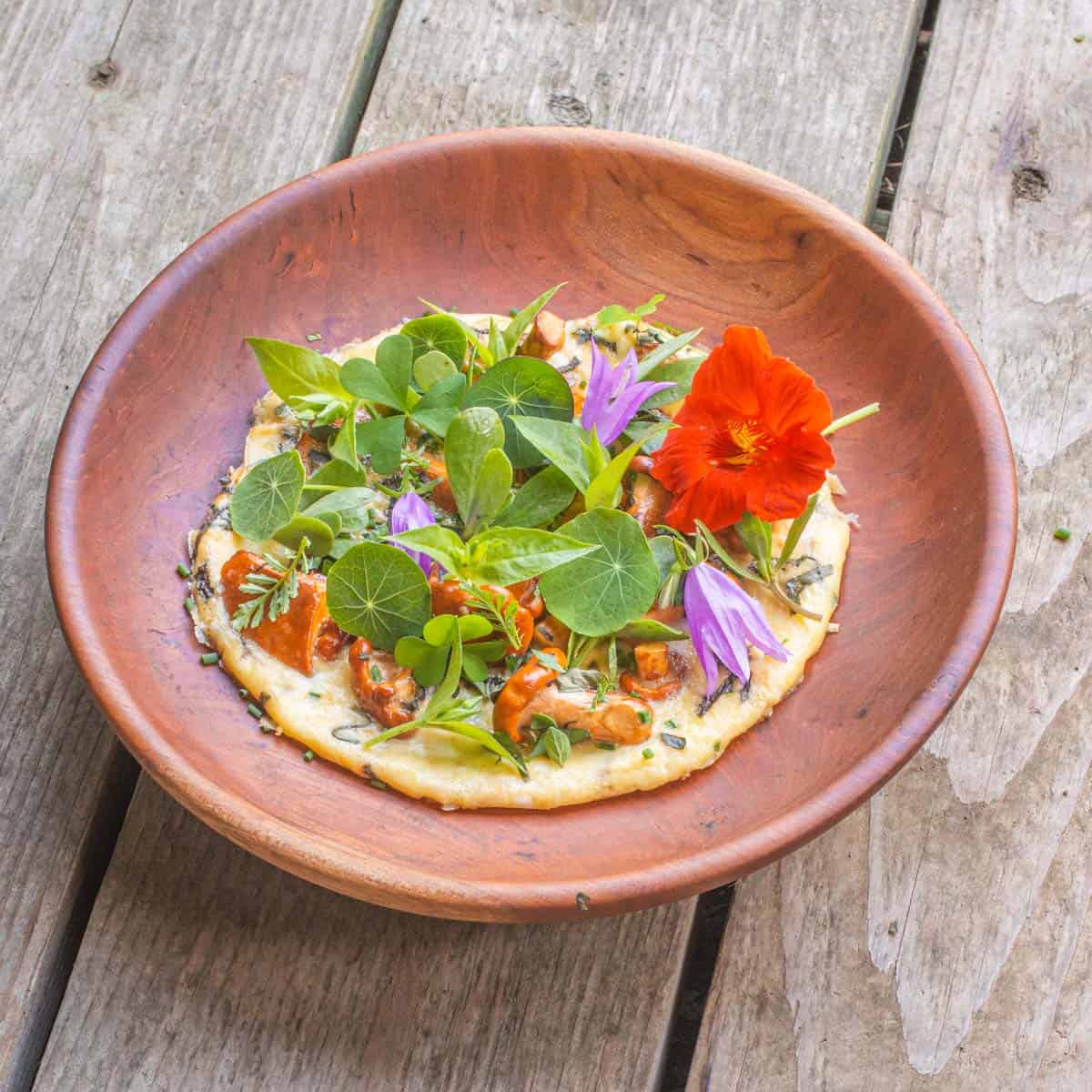One of the most famous of all the wild edible mushrooms, golden chanterelle mushrooms are easy to hunt and identify after you know them. Prized for their flavor around the world, they’re a delicious mushroom every forager should know. Here’s everything you need to know about them.
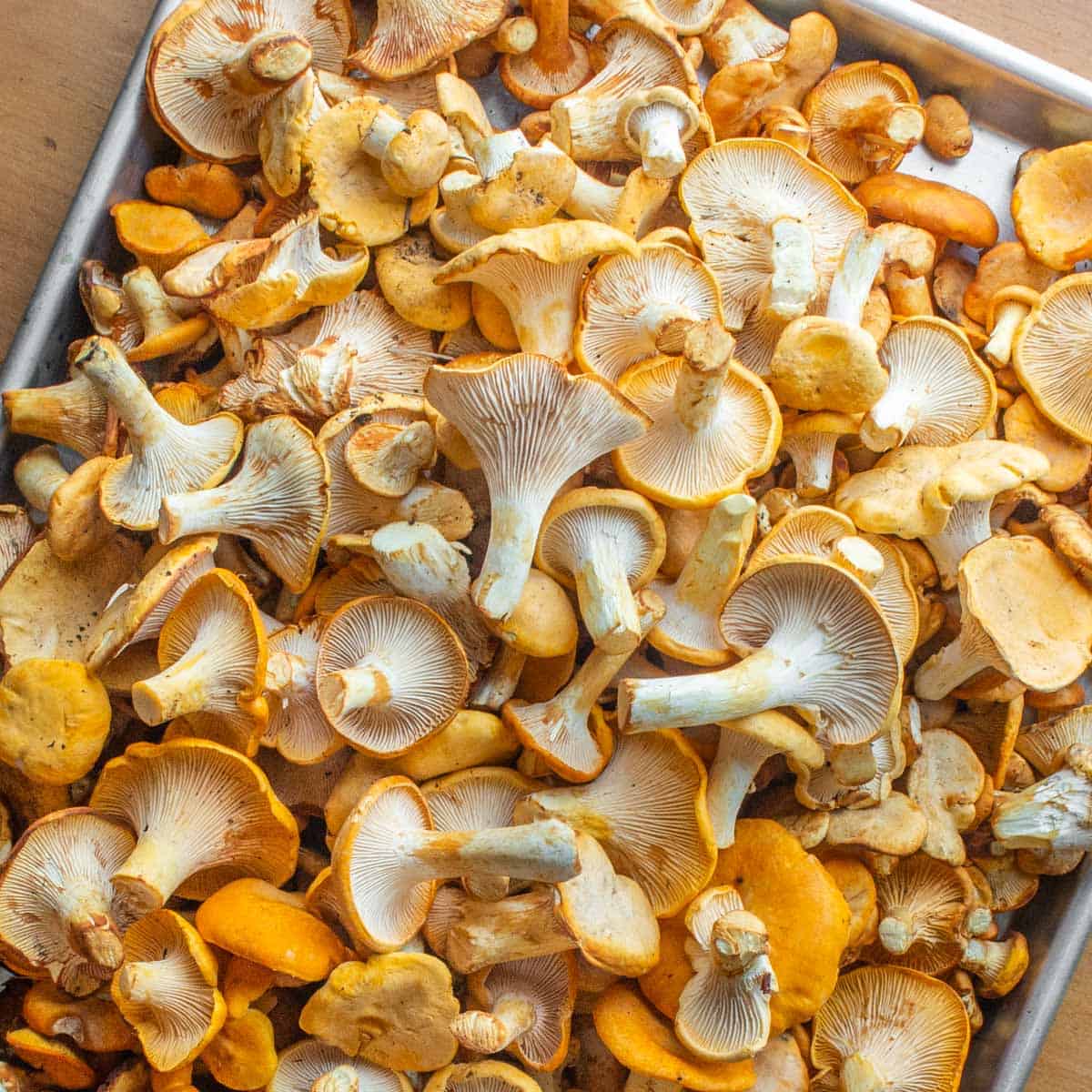
Previously all golden chanterelles in the United States were labeled as Cantharellus cibarius, but we now know there’s many different species around the world, thanks to genetic sequencing. I’ll go over a few species, but first, here’s some fun common names. Around the world chanterelles are known as:
- Finferli or Gallinaci (Italy)
- Lischki (Russia)
- Kanterelle (Sweden)
- Girolle (France)
- Pfifferling (Germany)
- Chorros (El Salvador)
Chanterelle Species
There’s many different species of the golden variety. It’s possible to harvest multiple species in the same day. I’ll describe a few different species I’ve enjoyed you might run into.
The Newfoundland Chanterelle (Cantharellus enelensis)
Named by my friends Andrus Votik and Professor Greg Thorn, the Newfoundland chant is one of the few pine-loving chants in the Midwest, growing with red pine and jack pine. It’s large size and good apricot aroma will fill a basket quickly.

The PNW Chant (Cantharellus formosus)
As seen in Costco, C. formosus is likely the most widely sold cantharellaceae by volume in North America. It grows with conifers like Douglas fir in the Pacific Northwest and is usually $20 per pound to the general public. It’s larger in size than most of the others, and has a milder, earthy flavor that only hints of apricot.

Spectacular Chanterelle (Cantharellus spectaculus)
Identified in 2013, this species found in the Midwest has a noticeably long stem, grows with hardwood trees (red oak), and can be confused with winter chanterelles at a glance. They have a noticeable pink or salmon-colored hymenium.

Smooth Chanterelles (Cantharellus lateritius)
A species common in the American South from July to October, the smooth chanterelle, as it’s known, lacks the false gills on the hymenium (spore surface under the cap). It’s occasionally sold commercially and has a good flavor.

California Chanterelles (Cantharellus californicus)
The largest of the family in North America, Cantharellus californicus grows with live oak and tanoak during the early fall throughout the winter. Besides being notoriously dirty, it has more fruity apricot flavor than C. formosus but isn’t sold commercially. I’ve had a single mushroom weigh over a pound.
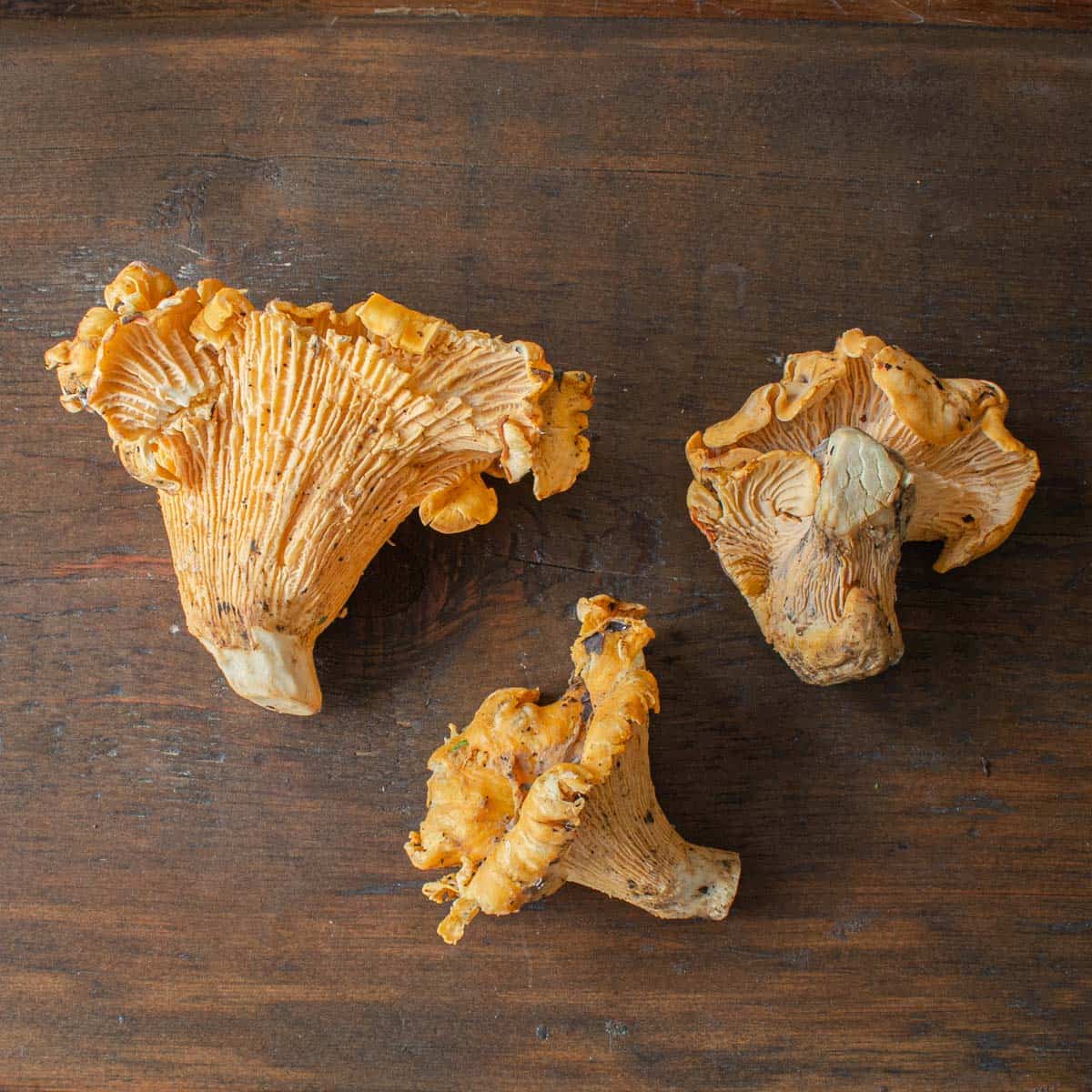
Ghost Chanterelle (Cantharellus phasmatis)
The “ghost” chant is one of the most delicious of all, and probably my personal favorite. Found in the Midwest growing with red and white oak during the summer in Minnesota and Wisconsin. It’s firm, white stem turning egg yellow at the cap, and rich apricot taste are one of the best.
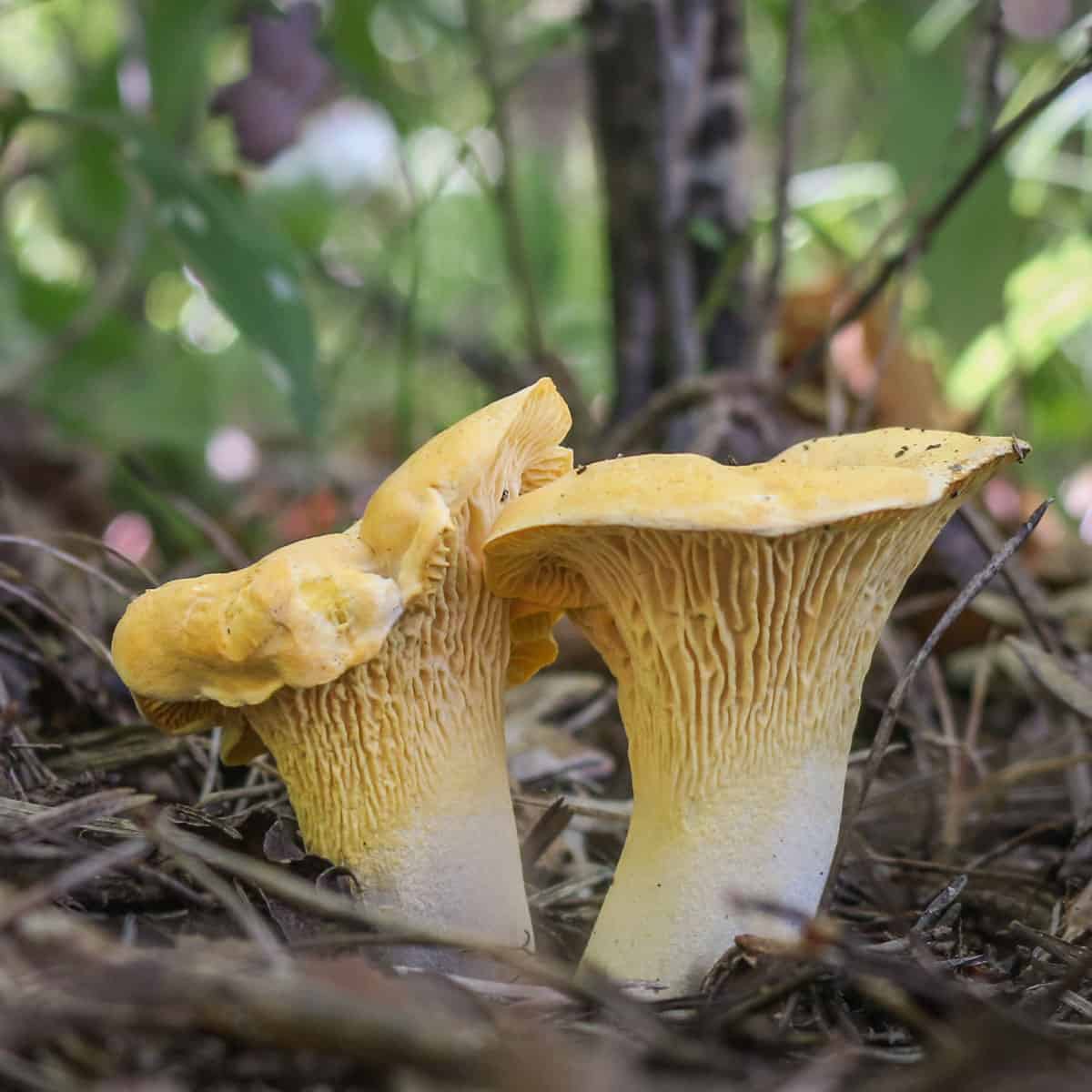
Cantharellus flavus
A smaller, more delicate golden chant that enjoys the same habitat as C. phasmatis and grow in the same area. The stem is yellow from top to bottom. They’re usually smaller with a funnel shape post maturity and are often beset by bugs. They’re also more fragile than most of their cousins, but have a good flavor.

White Chanterelles
could be one of a few different species depending on where you are. True white cantharellus (Cantharellus subalbidus) are a distinct, pure white species. But, many varieties also make a-typical, albino variations that can be confused with them. Albino and white chanterelles have the least apricot aroma of all I’ve had, but still retain a great flavor.
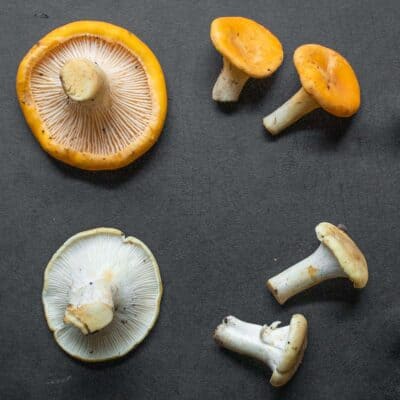

Other species of note include Cantharellus roseocanus of the Rocky Mountains with its pink cap and kaleidoscope of colors, as well a C. chicagoensis (another newly-named species.)

Chanterelle Mushroom Identification
These mushrooms are easy to identify after you know them. Unfortunately they are a gourmet mushroom with poisonous look alikes, so you do need to do your research. Here’s a few helpful tips on identifying them.
- The fruiting body often has a distinct funnel shape to it.
- True chanterelles have false gills or veins under the cap. They will never have true veins.
- Growing directly from the ground-never from wood.
- Typically, but not always, grow singularly, and not clustered.
- The cap is described as having an “egg-yellow” color, but can appear bright orange if it’s rained recently, or if it’s been dry.
- Have an unmistakable, fruity apricot aroma that’s most intense when fresh. Refrigeration mutes their smell.
Chanterelle Mushroom Look Alikes
Chanterelles are a delicious, gourmet mushroom with a few poisonous look alikes. Don’t let them scare you, but do be aware of them. Here’s the three big ones to look for.
Jack O’Lantern (Omphalotus illudens and others
The most common chanterelle look alike. They’re toxic and or poisonous. Thankfully, they’re easy to identify as they are saprobic and infect or decompose trees and grow directly from wood, where cantharellus are mycorrhizal, growing in harmony from trees directly on the ground.
Jack O’lanterns also have true gills and are usually larger, lacking an apricot aroma. The flesh is deep orange throughout when cut, and they also often grow in large clusters from a central stalk, instead of singularly like most true chantrelle mushrooms.
Wooly or Scaly Chanterelle (Turbinellus floccosus)
Formerly known as Gomphus floccosus, these aren’t as dangerous as the jack o lantern, but it will still make many people sick. Unlike Jack O’lanterns, this look alike does have false gills.


These grow with coniferous trees and are easy to separate from the golden chanterelles by looking at the color of the cap, which is often deep orange or brick colored. They also don’t have a noticeably defined stem, with the whole mushroom appearing quite thick. Some people peel and cook them, but I don’t recommend it.
False Chanterelle (Hygrophoropsis Aurantiaca)
Also a mushroom called false chanterelle, these are easy to separate from true chants as they have gills, that don’t fork like the false gills of the real thing. They’re also brittle, and lack the fruity aroma. They’re mildly toxic and can cause gastro-intestinal distress.
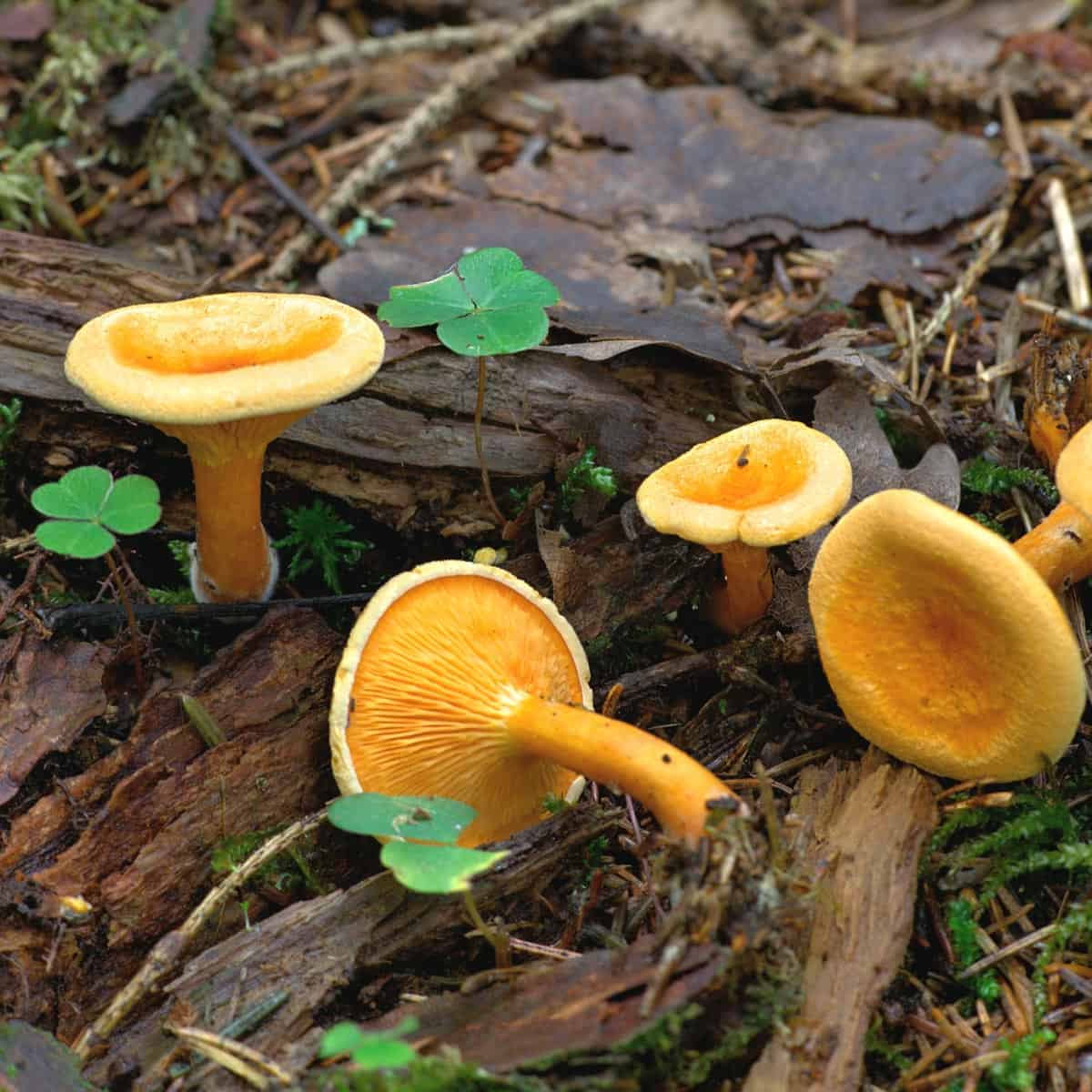
Similar Edible Mushrooms
Besides golden chants, there are many others to find and enjoy. Most are either closely related, or were assumed to be close cousins at one point in time. All are delicious.
- Black Trumpet Mushrooms
- Red Chanterelles
- Hedgehog Mushrooms
- Winter or Yellowfoot Chanterelles
- Pig Ear Mushrooms (Gomphus clavatus)
- Black and Blue Chanterelles (Polyozellus atrolazulinus)
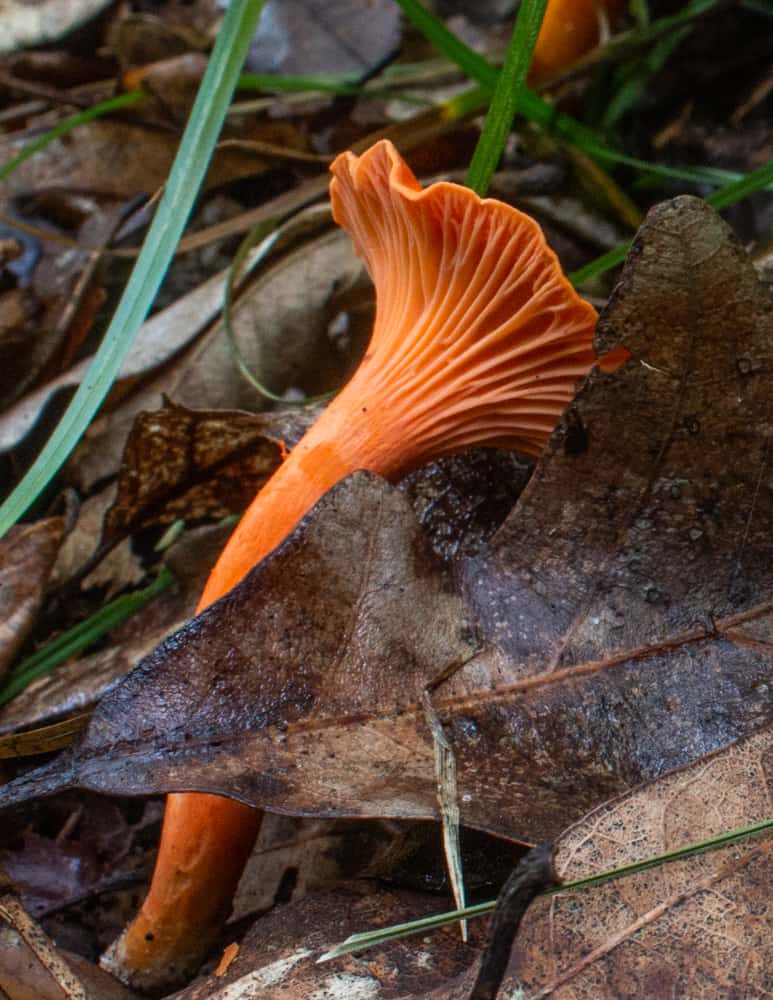
Chanterelle Season
Where I forage in Minnesota and Wisconsin, as well as around the Midwest, the season starts in Mid-July and goes through August. In Pacific Northwest, the season starts later, around November, and can last through April. They love oaks, especially burr oak, and red oak in the Midwest.
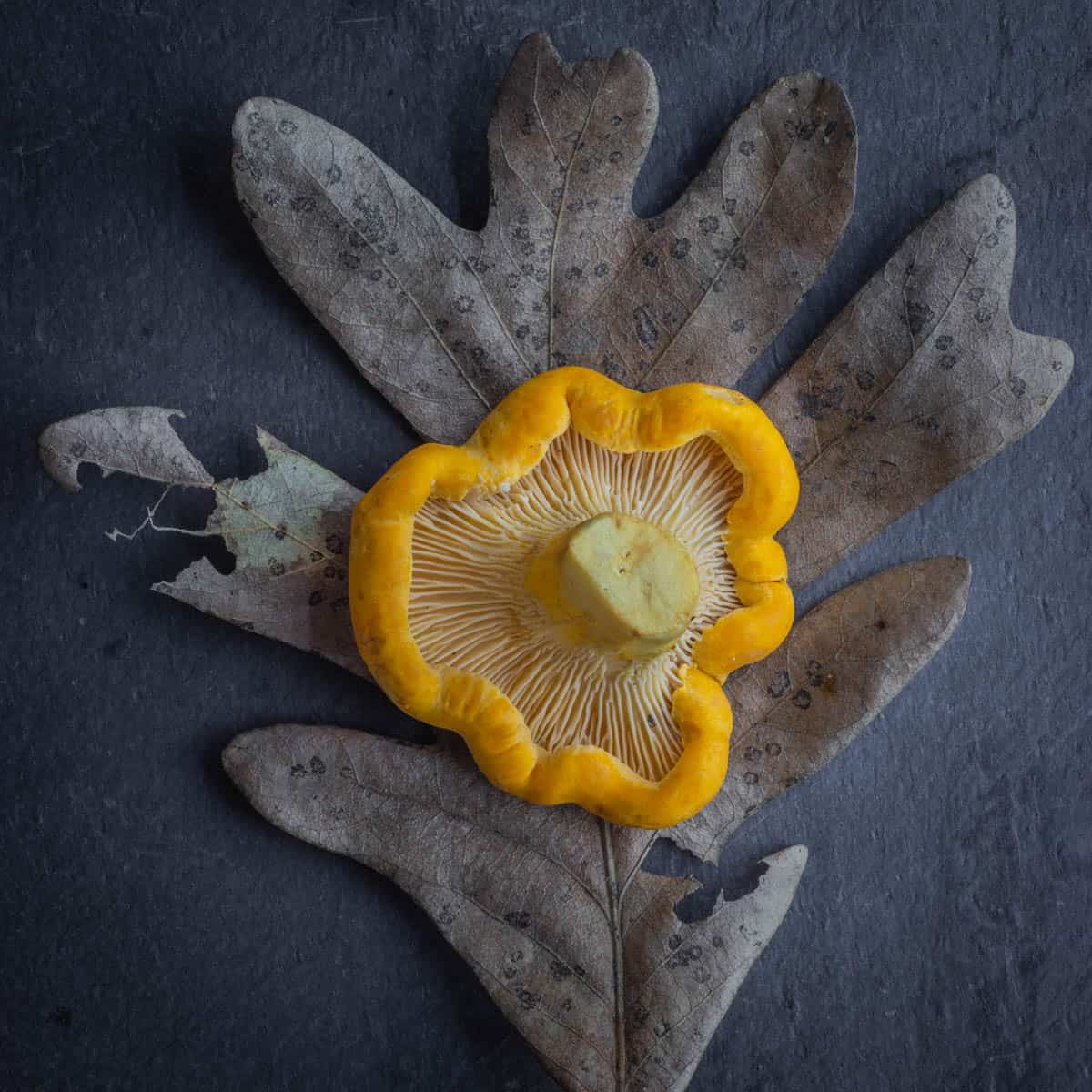
How to Harvest Chanterelles
The most important thing is to harvest clean mushrooms before putting them in your basket. Remove the mushroom from the ground by cutting or pulling, then trim the dirt from the stems. Inspect mushrooms as you pick for bug holes, cutting up until you don’t see any tunneling. Since they grow close to the ground, they can often be very dirty. Dirty mushrooms will be hard to clean and should be left in the woods to spread their spores.
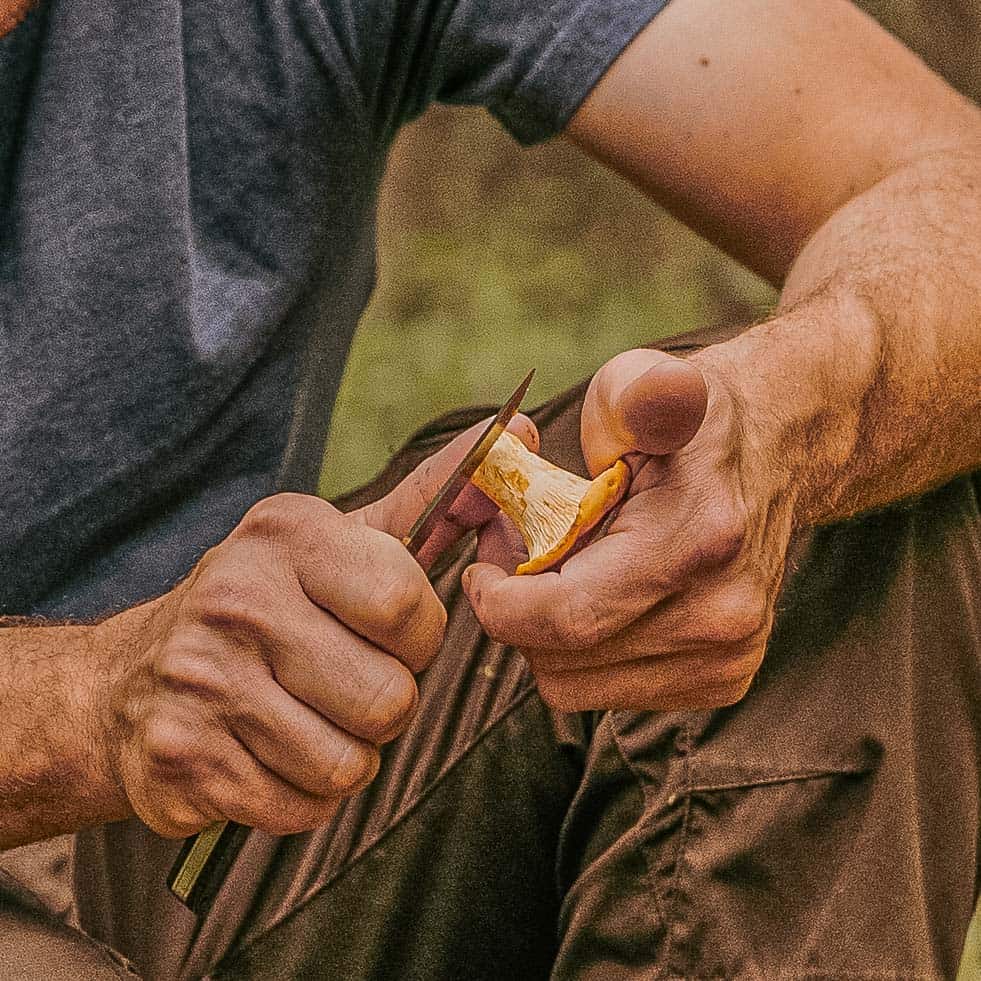
How to Clean Chanterelle Mushrooms
Full a sink with cool water and, working one at a time, swish the mushrooms in the water and inspect each one for dirt and leaf litter. Use the tip of a paring knife to spot-treat dirty areas, scraping off the false gills as needed with the tip of the knife, and swishing them in water again.
To store chanterelles, put the cleaned mushrooms on a paper towel to drain for a few minutes, then store in a Zip Loc bag in the fridge with a clean paper towel. The mushrooms will last for a week. If you store them in a paper bag they’ll dehydrate and dry out.
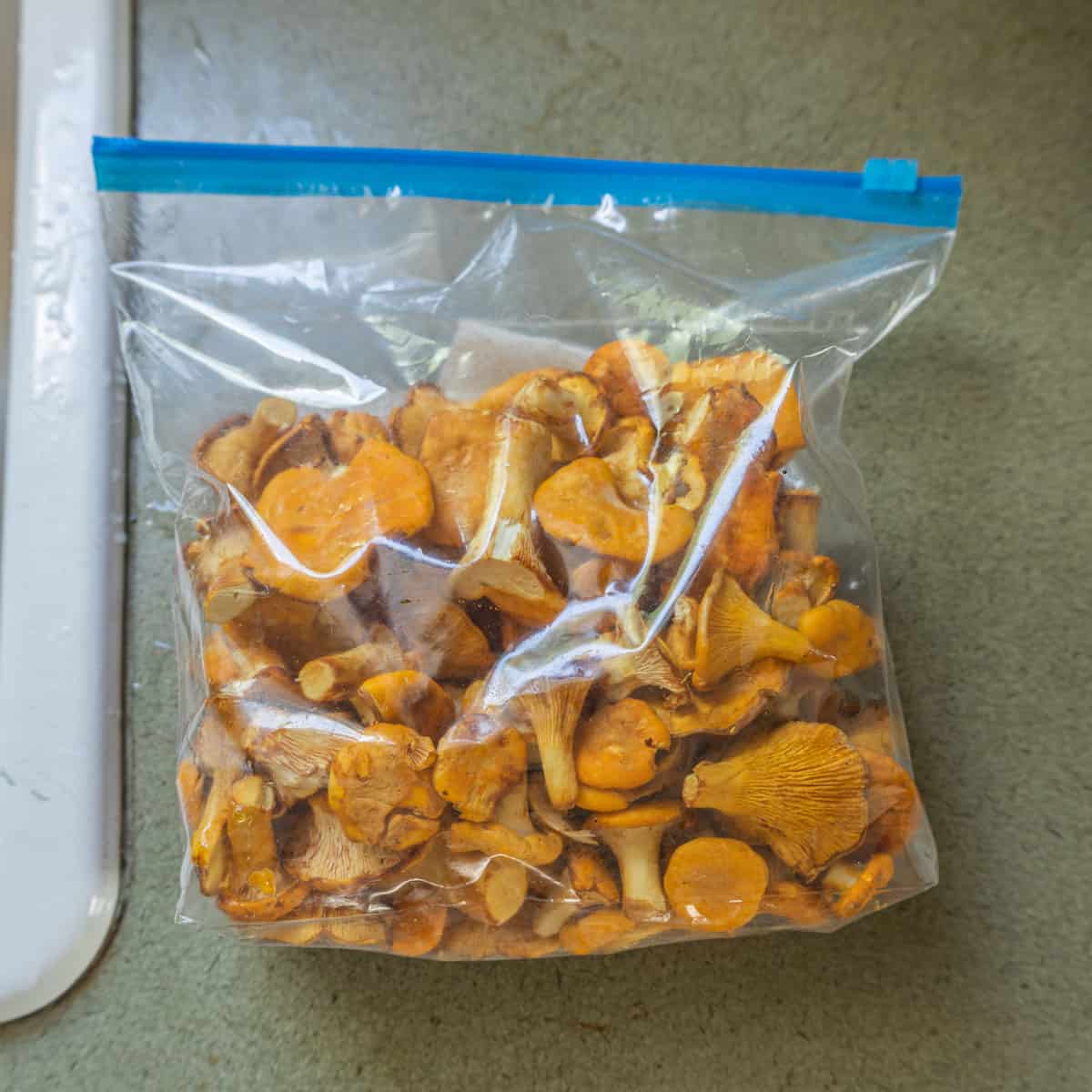
How to Cook Chanterelle Mushrooms
Chanterelles taste like firm mushrooms with a hint of apricot aroma, depending on how they’re cooked. The classic French way to cook them is simply trimmed and sauteed whole in a pan. The small buttons with in-rolled caps are the most prized, and will cost up to $40/lb fresh.
Small buttons or bouchon mushrooms are considered the finest, make the best pickles, and are best cooked whole to preserve their firm, chewy texture, which can be squeaky like a cheese curd.
If your mushrooms are older or larger, they can be cut into pieces and sauteed or stewed, made into mushroom duxelles, used in soup, or any place you would use mushrooms. Like most mushrooms, they love cream and butter. They have a special love of sweet corn, and the sweetness of both ingredients together is a summer treat.
How to Preserve Chanterelle Mushrooms
The mushrooms can be pickled, frozen, or dried. Making them into wild mushrooms duxelles is also a good option. I’ll briefly explain the process for each method.
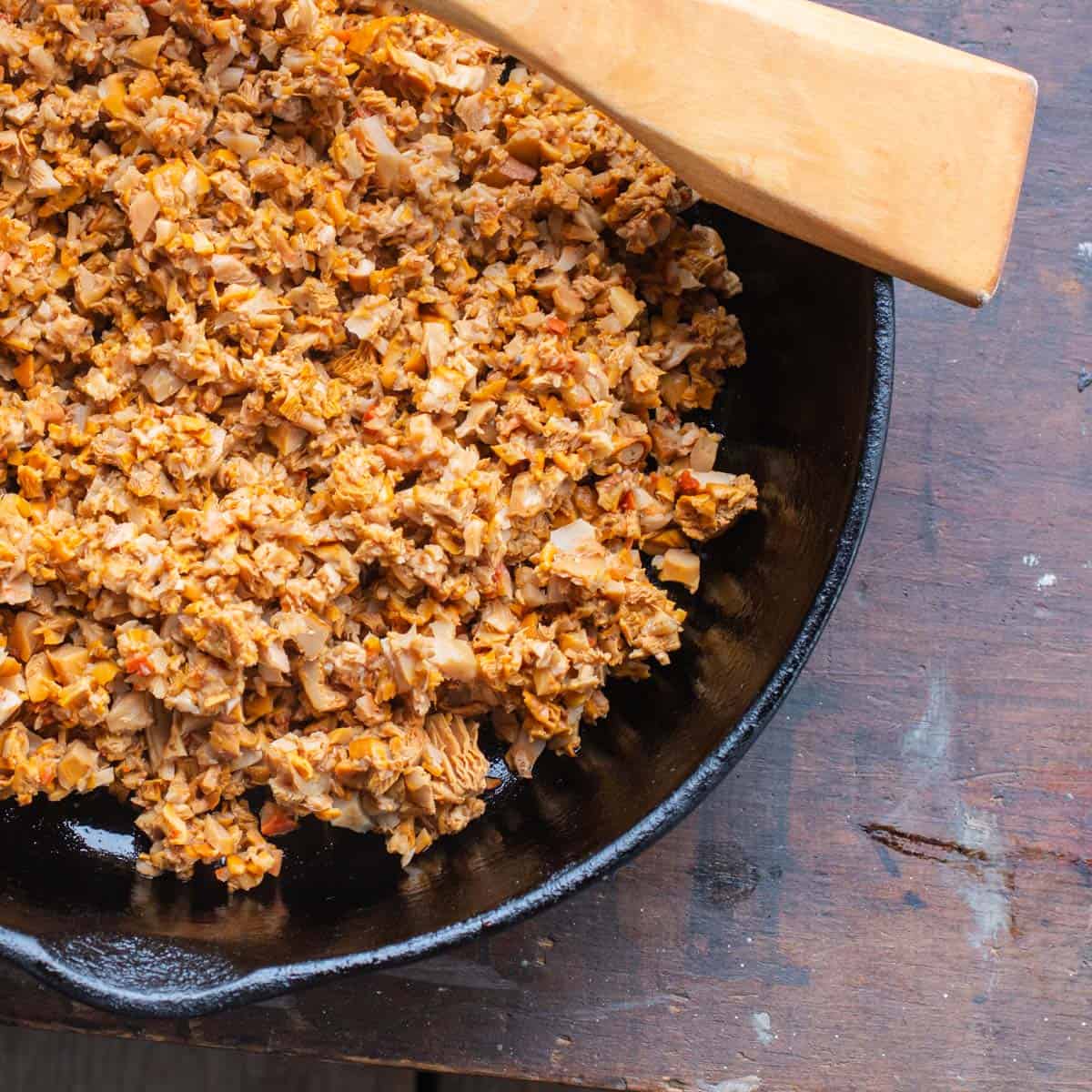
Pickled chanterelles are a stand-by at my house, and I put up a few quarts each year. There’s a link to the recipe in the caption of the image below.
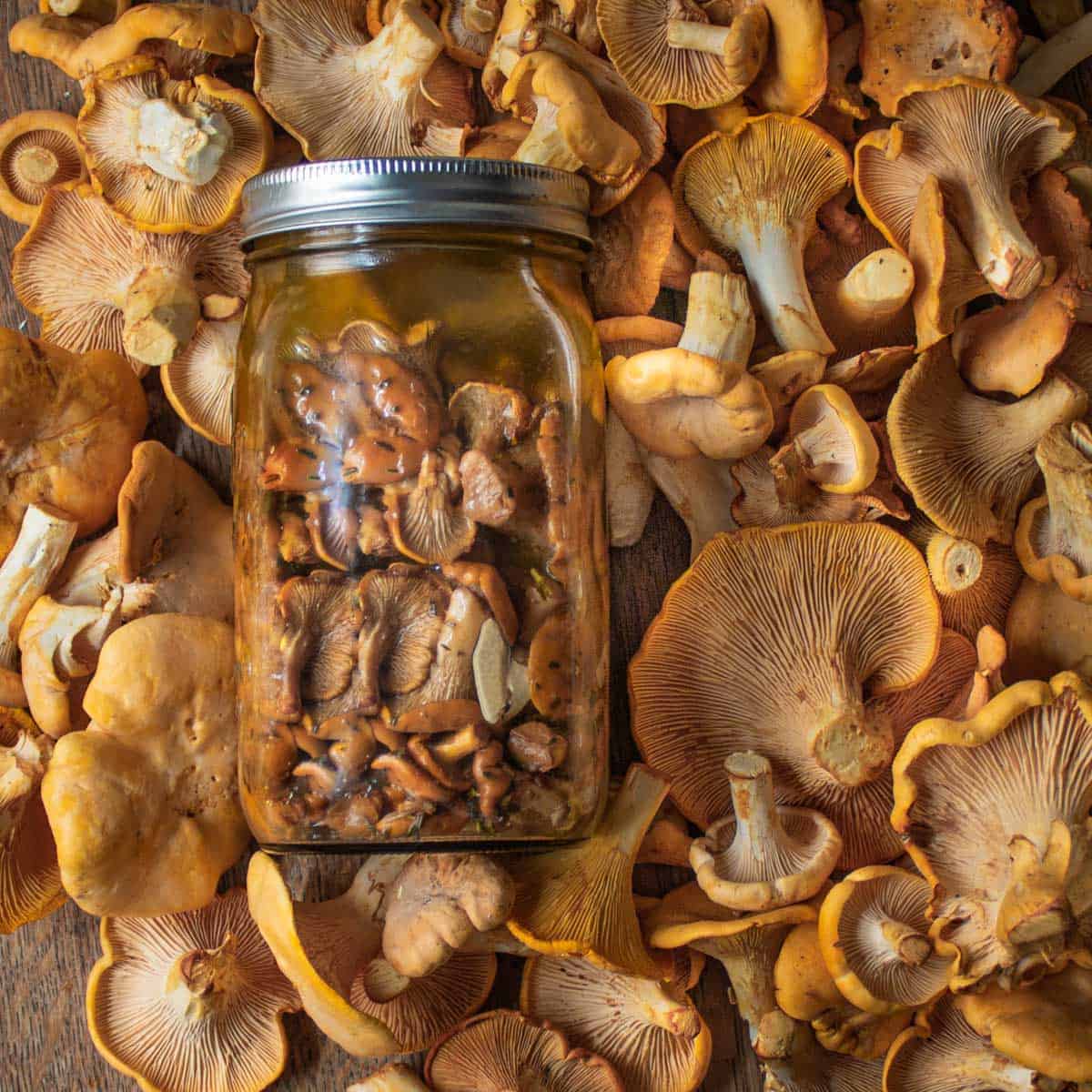
How to Freeze Chanterelles
To freeze chanterelles, you can sweat them in butter, then vacuum seal the bag and freeze. Sometimes the pressure of vacuum sealing can flatten small buttons. The best way to keep the shape of the mushrooms is to blanch them in a pot of lightly salted water, and freeze in a container covered in their cooking liquid.
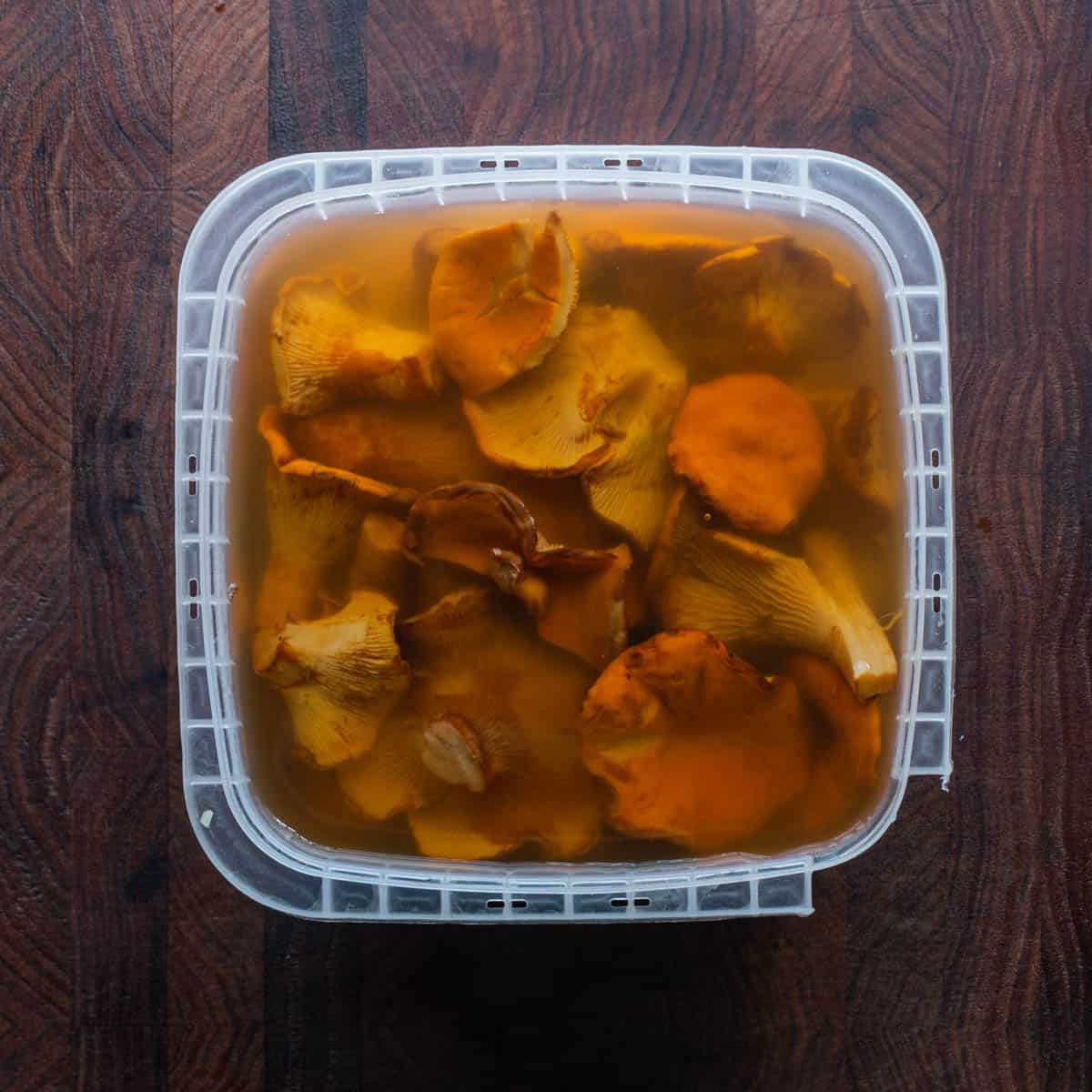
Drying chanterelles
Some will say drying chanterelles is a waste of time, but it definitely isn’t. White dehydrated chanterelles won’t become tender when reconstituted, the mushrooms can be ground to powder and still keep their apricot fragrance. My favorite way to use the dried powder is in cornbread.
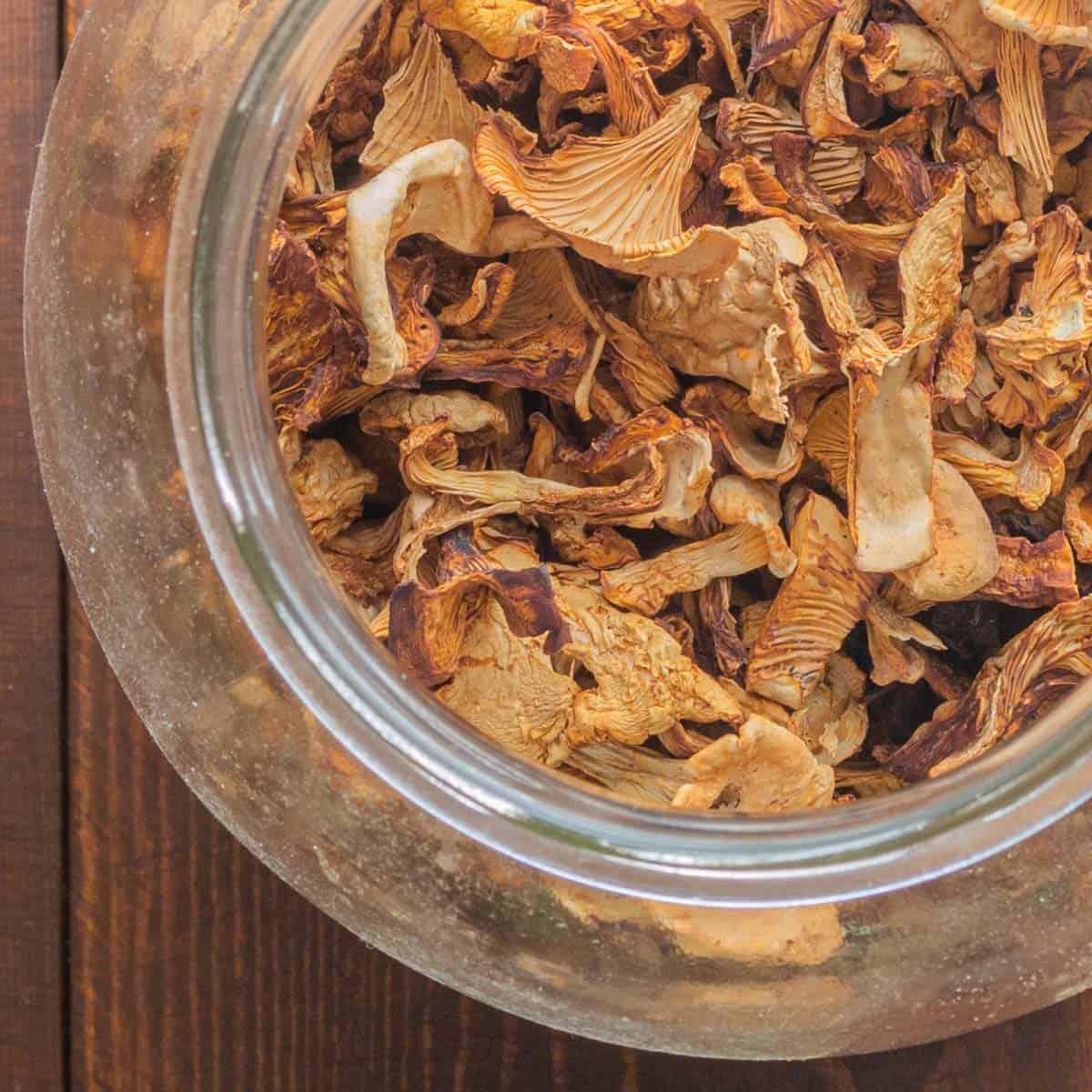
Chanterelle Mushroom Recipes
Soups, sautes, or just chanterelles on toast. These are one of the most versatile mushrooms. Here’s a few of my favorite recipes.
Chanterelle Pasta with Roasted Garlic Wine Sauce
A delicious pasta passed onto me by a chef I worked for. One taste and it might be your new favorite.

“Last Chance” Cream of Chanterelle Soup
A rich, creamy soup that’s also a good way to use buggy or damaged mushrooms.
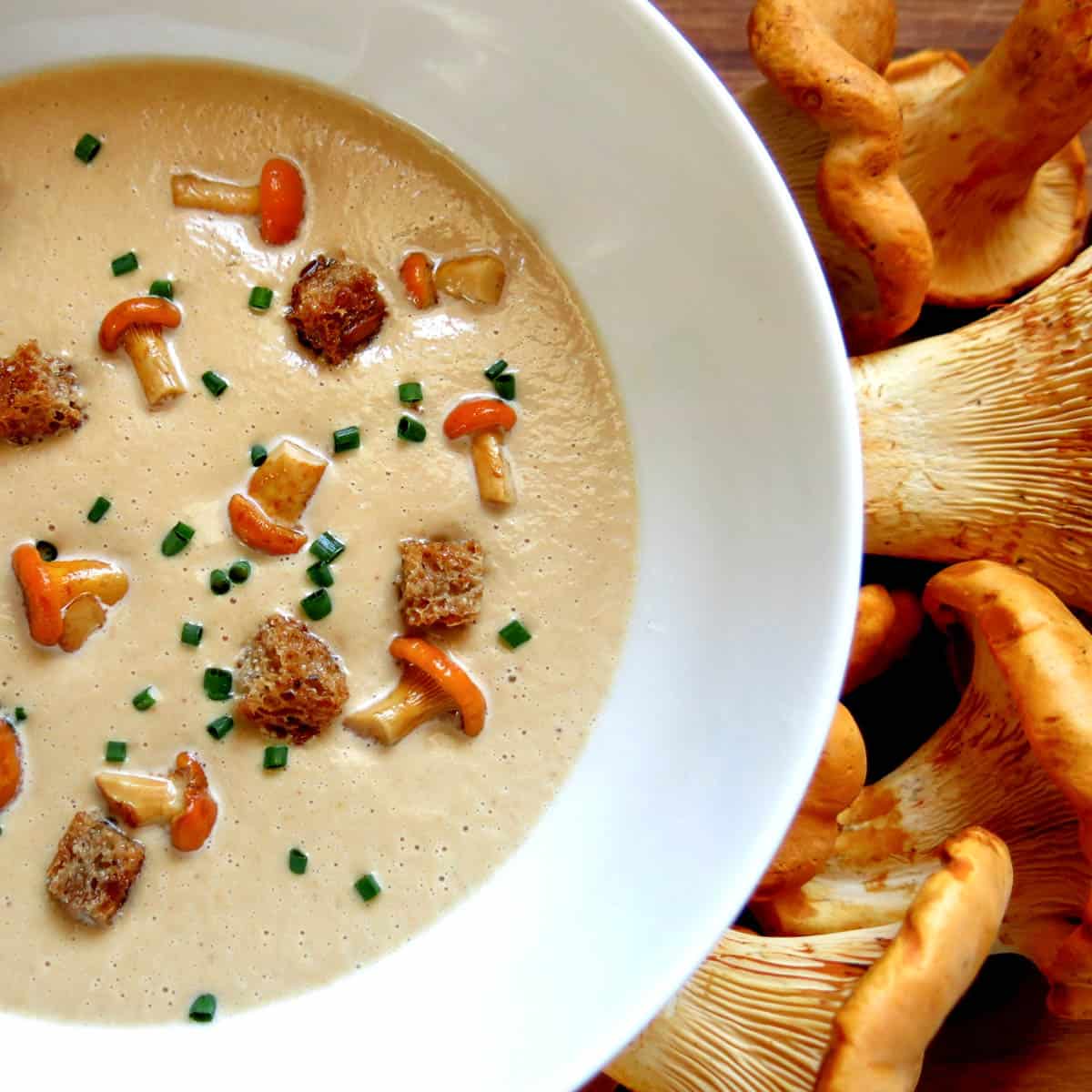
Whole White Chanterelles Roasted With Thyme
Whole roasted chants with a handful of fresh herbs is a great, simple way to enjoy the mushrooms.
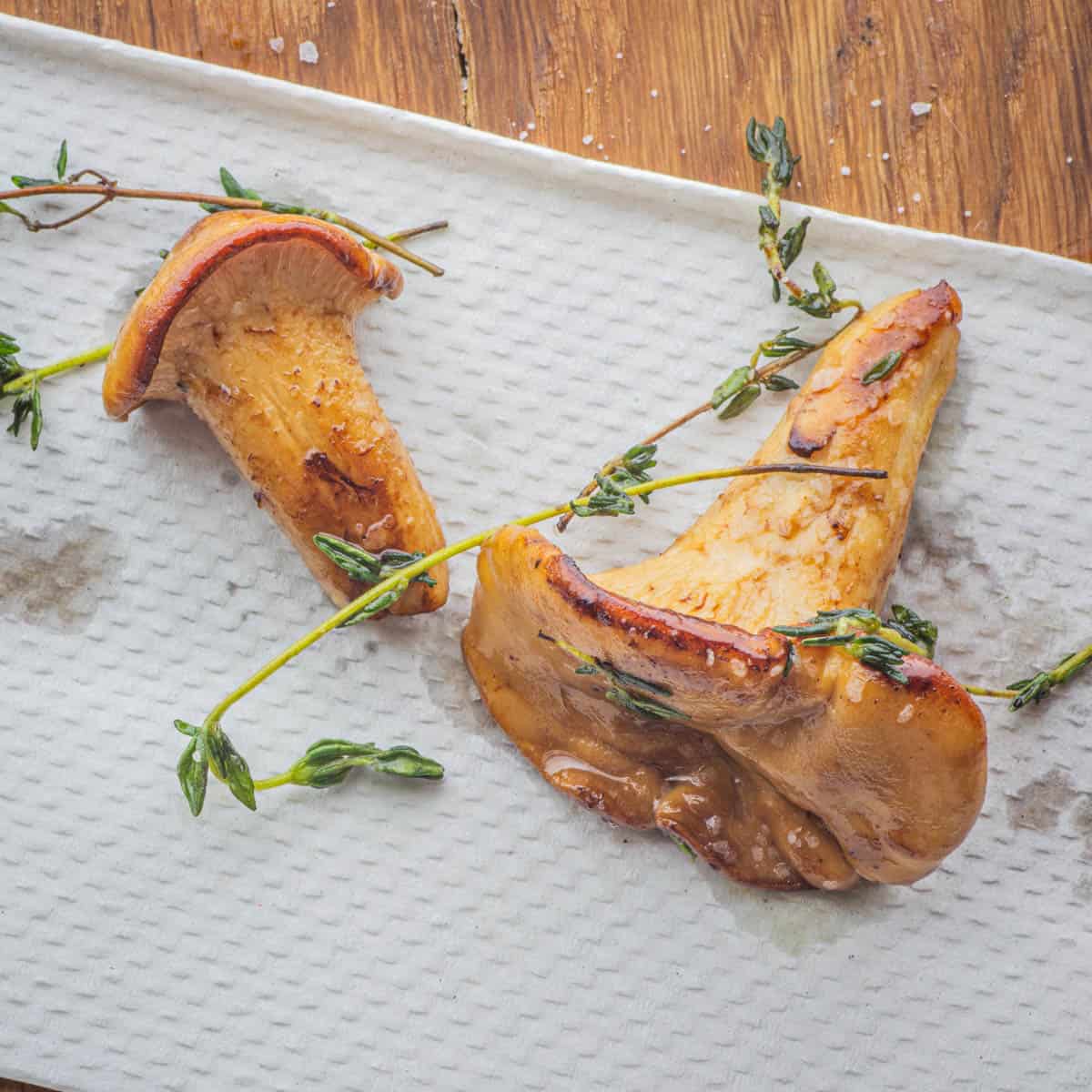
Classic Chanterelle Omelet aux Girolles
A classic French recipe for a small omelet made from the first buttons of the year.
